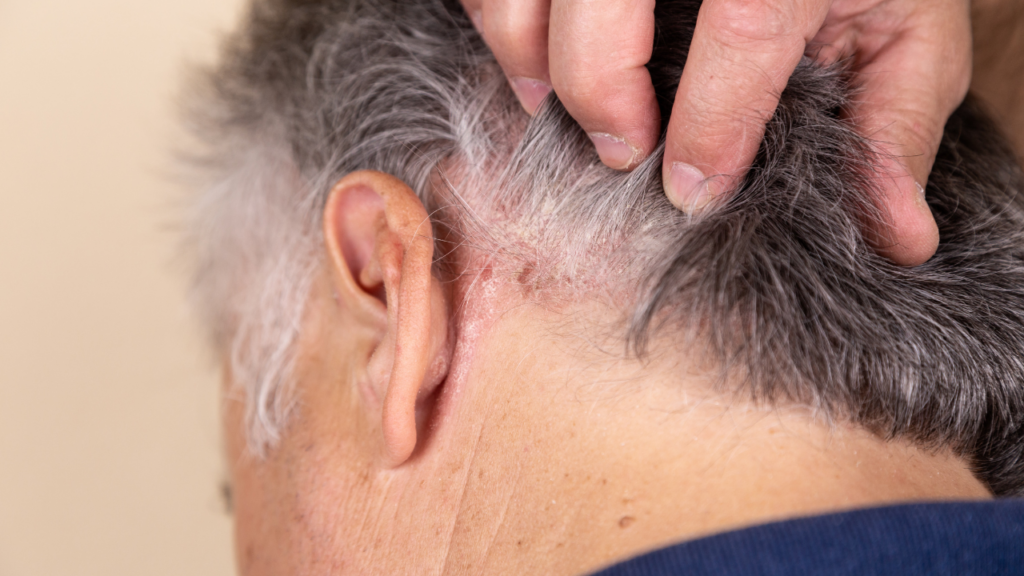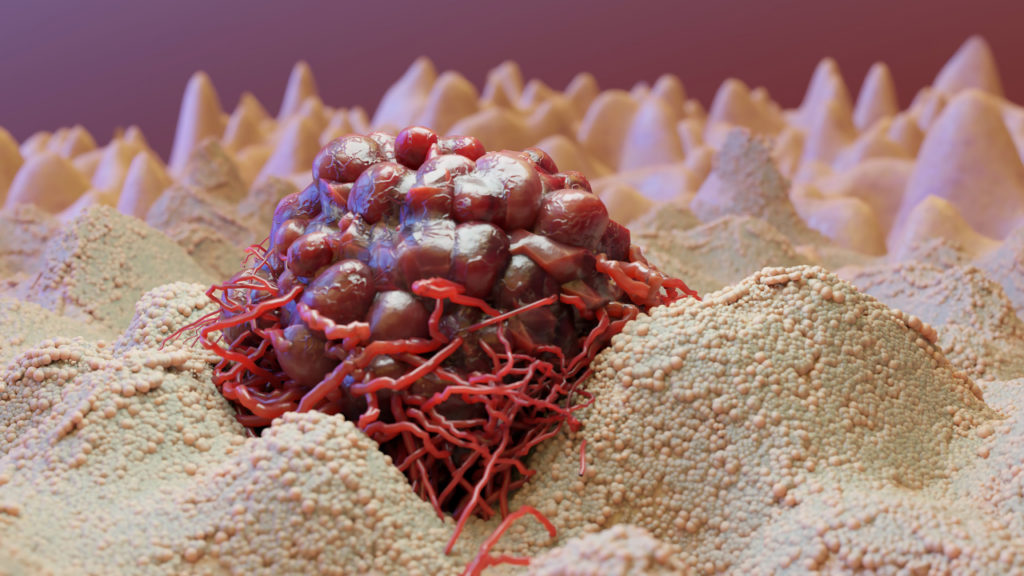|
Getting your Trinity Audio player ready...
|
Skin cancer on the scalp is a critically important yet often overlooked subject when it comes to skin cancer cases. The prevalence of skin cancer in areas frequently exposed to environmental elements such as sunlight is well-documented, yet the scalp remains an area less considered, despite its susceptibility to similar risks.
This article aims to inform patients and the general public about the significance of vigilance in monitoring the scalp for signs of skin cancer.
Skin Cancer on the Scalp
When we refer to skin cancer in the context of areas such as the scalp or scalp tumors, we’re addressing a region that is frequently neglected during routine self-examinations. Regardless of hair density or scalp visibility, skin cancer can develop and manifest in various forms.
Individuals should be vigilant about changes occurring in areas that are not easily observable, and healthcare providers should underscore the significance of a thorough check by a medical professional, inclusive of the scalp, during regular screenings.

How to Identify Skin Cancer on the Scalp?
Check for Lesions
A meticulous examination of the scalp should be done by parting the hair in various sections to reveal the entirety of the skin. What you’re looking for could be a new mole, an abnormal growth that resembles a wart, or a crusty spot. Early stages could show as a sore that doesn’t heal, evolves, or bleeds intermittently.
In some cases, a lesion might feel painful or present without any discomfort. It’s critical for individuals to consult a healthcare provider if they detect a preexisting mole that has changed or new unusual lesions.
Other Signs and Symptoms
Aside from visible changes, other symptoms may include itching, an ulcer that doesn’t seem to heal, or the enlargement of lymph nodes near the affected area, especially if a lump or swelling occurs without an apparent cause.
Noting any irregular border of a mole or any asymmetrical feature is an essential part of the detection process. If you observe any of these changes, scheduling an evaluation with a medical professional should be done promptly.
Treatment Options By Skin Cancer Specialists for Scalp
Removal by Surgery
Surgical removal is the cornerstone of treatment for many forms of skin cancer. Techniques like Mohs surgery, well-regarded for its precision and success in preserving healthy tissue, help minimize surgical scarring, and downtime. This meticulous procedure removes cancerous cells while sparing as much of the surrounding healthy tissue as possible, which is particularly significant for conspicuous areas like the scalp.
Image-Guided Treatment
For non-melanoma skin cancers, innovative image-guided treatments allow professionals to target the afflicted area with precision. This method minimizes interruptions to the patient’s lifestyle and reduces exposure to the surrounding healthy tissue.
SRT Therapy
Superficial Radiation Therapy (SRT) has emerged as a non-surgical option offering a less invasive treatment for patients. Serving as an alternative to traditional surgery, SRT utilizes low doses of radiation to target the cancerous cells without the need for incisions, thereby preserving the appearance of the scalp and eliminating the risk of surgical scarring.

Role of Healthcare Professionals
It is incumbent upon healthcare professionals within the provider network to assimilate these insights into their clinical practice. An understanding of the advancements in skin cancer detection and treatment methodologies, especially for anatomically challenging regions such as the scalp, is imperative. Such knowledge significantly enhances the value of the services rendered to patients.
Healthcare providers must ensure that patients are thoroughly educated about the risks posed by ultraviolet radiation, the use of tanning beds, and the critical importance of undergoing regular skin screenings. Such measures are pivotal in mitigating the prevalence and impact of this common, yet addressable, condition. Medical summit platforms such as DrTalks share necessary knowledge and tools to effectively navigate patients through the processes of health maintenance and recovery in the event of skin cancer concerns.
Conclusion
In conclusion, the issue of skin cancer on the scalp, while often overlooked, demands heightened awareness and proactive measures for detection and treatment. From the precision of surgical options such as Mohs surgery to the innovative, less invasive approaches like Superficial Radiation Therapy, the advancements in medical science offer promising paths to recovery for patients stricken with scalp tumors.
Furthermore, the pivotal role of healthcare professionals in educating patients about preventive measures and the importance of regular screenings cannot be overstated. As we move forward, the collective effort of both individuals and medical practitioners in prioritizing skin health, particularly in high-risk areas, remains crucial in the fight against skin cancer.
References
Prodinger, Christine Maria, Josef Koller, and Martin Laimer. “Scalp tumors.” JDDG: Journal der Deutschen Dermatologischen Gesellschaft 16, no. 6 (2018): 730-753.
Swanson, Neil A. “Mohs surgery: technique, indications, applications, and the future.” Archives of dermatology 119, no. 9 (1983): 761-773.
Han, Haowei, Anita Gade, Francesca M. Ceci, Alec Lawson, Sloane Auerbach, and Mark S. Nestor. “Superficial radiation therapy for Nonmelanoma skin cancer: A review.” Dermatological Reviews 3, no. 6 (2022): 409-417.



Reading about the significance of monitoring the scalp for signs of skin cancer resonated deeply with me, especially considering my own experience. Fortunately, during a routine visit to the doctor’s office, a squamous cell carcinoma was detected early on my skin. It was a stark reminder of how critical it is to pay attention to parts of the body that we might not consider vulnerable to sun exposure. The fact that it was caught early made it possible to have it easily and safely removed, which I’m incredibly grateful for.
The emphasis on thorough self-examinations and professional check-ups, including less visible areas like the scalp, in the blog post cannot be overstated. It’s a practice that undoubtedly played a crucial role in my own early diagnosis. The detailed description of what to look for during these examinations, including new moles or abnormal growths, is invaluable information for everyone, underscoring the importance of being proactive about our skin health.
The overview of treatment options presented, from surgical removal with techniques like Mohs surgery to non-surgical options like Superficial Radiation Therapy (SRT), offers hope and options to those facing a diagnosis. It’s reassuring to know that advancements in medical science are providing precise and less invasive treatment methods, preserving not only health but also quality of life.
Healthcare professionals play a pivotal role in educating and guiding patients through prevention, detection, and treatment processes. Their expertise and dedication to patient education on the risks of ultraviolet radiation and the importance of regular skin screenings are vital components in the fight against skin cancer.
In conclusion, this blog post highlights the crucial yet often overlooked issue of skin cancer on the scalp. It serves as a powerful reminder of the need for vigilance in skin health, the importance of regular check-ups, and the advancements in treatment that offer effective recovery options. My own experience underlines the message that early detection is key and can lead to a positive outcome. It’s a collective effort between individuals and medical practitioners to prioritize and maintain skin health, especially in areas as exposed and vulnerable as the scalp.
If you feel inclined please share your own experiences to encourage others to join our discussion and mission of helping 1 Billion people get the information they need directly from our DrTalks Luminaries.
The article sheds light on the often-neglected issue of skin cancer on the scalp, highlighting its risk despite being covered by hair. It emphasizes the importance of regular checks for signs of skin cancer, such as unusual moles or sores, due to the scalp’s exposure to harmful elements like sunlight. The piece calls for increased vigilance from both the public and healthcare professionals in the detection and prevention of skin cancer. I like that the article underscores the critical need for awareness and proactive measures in addressing skin cancer on the scalp, advocating for improved public health strategies.
What an enlightening read! Skin cancer on the scalp is indeed a crucial issue that often doesn’t receive the attention it deserves. Your article provides a comprehensive guide on identifying signs of skin cancer on the scalp and highlights various treatment options available, including the less invasive approaches like Superficial Radiation Therapy. It’s crucial for individuals to be vigilant and for healthcare professionals to integrate scalp examinations into routine screenings. Thank you for shedding light on this important topic and emphasizing the role of awareness and proactive measures in combating skin cancer.